Garden and indoor tuberous plants: types and cultivation
Ornamental flowering plants are grown from the tubers, which die off after flowering, leaving live baby tubers in the ground, which enter a dormant period in the winter and germinate when favorable conditions occur. They can be left in the ground, or they can be dug up and stored until the next disembarkation. The tubers of some plants can be eaten, for example, potatoes and Jerusalem artichoke.
Content:
- Tuberous plants: description
- Garden tuberous plants
- Indoor tuberous plants
- How tuberous are planted
- Care Tips
- Possible growing problems
Tuberous plants: description
Tubers (Tuber) are shortened shoots of plants with axillary buds that have a rounded shape. They develop at the ends of the elongated processes of the rhizome. The tubers store a lot of nutrients that the plants use for nourishment in winter or during drought, to extract the energy necessary to restore growth in the next season.
Tubers are stem and root, they are used for plant propagation:
- Stem tubers usually form on the subcotyledonous knee, which is located below the cotyledonous node. Often, such tubers have one or two supra-cotyledons - plant parts in seedlings between the cotyledons with a developed leaf. Stem tubers have a vertical direction of germination and an ovoid shape. Several vegetative buds are located at the narrowed end.
- Root tubers are formed on the sides of the parent plant and are located shallow underground. Many of these tubers live as long as the plant grows and develops, after which they die off. But the tubers of some plants, for example, begonias, can live long and give life to several generations of plants.
The variety of tuberous plants allows growers to grow them both in the garden and at home.
Garden tuberous plants
Produce garden tuberous plants:
- Anemone (Anemone) begins to bloom in March-April, likes well-lit sunny or slightly shaded places, separation of baby tubers is carried out in the summer. Tuberous anemones are represented by chamomile and poppy-like forms. The former have flowers with yellow centers and narrowed petals. The most common is the tender anemone, which grows up to 15 cm. The flowers of the latter are similar to poppies and are double or simple. The most popular poppy-shaped anemone is considered to be crown, whose height reaches 30 cm.
- Begonia (Begonia) requires annual replanting and renewal of depleted soil, which are carried out in the spring. At the time of planting, it is very important that the tubers of the plant have already germinated a little. Begonia tubers are not annual, they are capable of giving life to the plant for several years. Usually begonias bloom two months after transplanting or planting. The older the plant, the faster it will bloom. Every year the plant lays buds lower and lower. Begonia blooms in June and prefers slightly shaded areas and abundant watering, especially in dry weather. Sprouted tubers are used for reproduction.The most popular are multi-flowered begonias (20 cm high) and drooping (up to 60 cm). These plants grow equally well in home and garden conditions.
- Dahlias require special attention when storing tubers. After the dying off of the aerial part, the stems are cut so that the root collar is preserved. The tubers are dug up, the soil is washed off, the thin roots are removed and dried. After that, they are placed in storage. In winter, tubers must be inspected, rotten and spoiled specimens must be removed. Successful storage of dahlia tubers depends on the digging time, which is best done after frost.
- Crokosmia (Crokosmia) is able to decorate any flower garden thanks to bright sunny and crimson colors. Bloom comes in July-August, prefers sunny, well-lit places. These perennial tuberous flowers have xiphoid leaves and orange-yellow funnel-like flowers. The plant grows up to 60 cm and forms several small baby tubers every year. When grown annually transplants do not require, but prefer well-lit areas without drafts and require shelter for the winter. The best time for breeding is spring. Reproduction is possible seeds, but at the same time flowering occurs in two years.
- Corydalis (Corydalis) is a perennial plant of the smoky family. Usually, the plant is short, reaching a height of 10-30 cm. Corydalis has bluish-green leaves that die off by the end of spring. The flowers are collected in cyst-like peduncles at the tops of the stems. Flowering occurs on the eve of or after the death of leaves in May - June. After flowering, fruits are formed, due to which they can multiply by self-seeding. Corydalis prefers shaded areas.
Indoor tuberous plants
The most popular indoor tuberous plants are:
- Ginger (Zingiber) forms cone-shaped flowers that gather in long inflorescences. Unpretentious in care and blooms annually. In addition, its tubers are edible and have medicinal properties. Ginger prefers warm, light spots and regular watering... In autumn, it retires, signaling this with yellowed leaves. The plant is propagated in early spring by dividing the tubers.
- Pleione belongs to the family orchids... Forms from five to eight peduncles of delicate shades - from whitish and yellowish to pink and lilac. Flowering of different species occurs in spring and summer. Green tubers indicate flowering in spring, and reddish tubers in summer. The plant rests from autumn to spring. The tubers have a lifetime of no more than two years. Pleion grows well in slightly acidic clay-peat soils, which must be constantly moist. However, during the dormant period, watering is stopped.
- Hemantus (Haemanthus) from the amaryllis family. The name of the flower translates as "blood flower". However, the people call it "mother-in-law's tongue" because of the elongated fleshy leaves. The most beautiful species are considered to be hemantus with blood-red and white flowers. Beautiful large spherical flowers appear earlier than leaves - in April-May. But for this, the flower must be kept in dry soil at a temperature of 10 degrees for two months (from October to November). The plant should be propagated and transplanted at the end of winter. Watering is needed moderate, and after the formation of leaves - abundant. During the development period, the hemantus needs to be fed with liquid fertilizers once a week.
How tuberous are planted
Before planting tuberous plants, you should study their characteristics. Some species need to be planted in the fall and others in the spring. Spring plants are planted in the fall before frost. Before the onset of cold weather, the tubers should have time to take root, but not grow. During frosts, plants enter a dormant period, and wake up with the onset of spring.
Most tuberous can be left to winter in the ground, and those that bloom in summer do not tolerate frost and must be dug up and stored in a cool room. Such tubers are planted in spring, with the onset of stable warm temperatures (begonia, anemone, dahlia).
When purchasing tubers, you should pay attention to their appearance - there should be no spots on the tubers that indicate infection with diseases.
The roots must be healthy and strong, and the tuber itself must be crowned with a small sprout that indicates that the plant is viable. Before planting tuberous planting material, it should be treated in a manganese solution for disinfection and protected from diseases and pests.
Soil features:
- The main thing to remember is that tuberous plants do not tolerate acidic soil, slightly alkaline is ideal for them. If the soil on the site is acidic, then during its preparation lime should be added or ash.
- Also, the soil should not be waterlogged. On the site there should be no stagnation of water after rains, otherwise the tubers are affected by rot.
- The soil should be slightly thinned with sand to ensure moisture permeability and oxygenation.
- Fertilizers must be applied before planting, laying out a high-quality organic in the planting hole and be sure to sprinkle with a small layer of sand, as well as the tubers themselves, so that the soil does not stick to them and does not cause rotting.
- It is also necessary to ensure good drainage.
Care Tips
All types of tuberous plants are quite unpretentious in care. All they need is:
- Lighting and temperature. Most often, tuberous plants like abundant lighting, where they actively develop and bloom faster. Partial shade is also suitable for these flowers, but flowering occurs a little later. Lighting should be abundant, but without exposure to direct sunlight, which can shorten the flowering period and worsen the decorative effect of the plants.
- The comfortable air temperature for the normal development of plants during the growing season is at least ten degrees Celsius. However, for the rest period, the temperature should be close to zero, but not minus.
- Irrigation and air humidity. Literate watering - a guarantee of active development and lush flowering of tuberous plants. Lack of moisture can lead to dulling of the color of flowers and to the release of leaves and buds. In hot weather, it is recommended to water in the early morning, avoiding the foliage from getting wet, so that burns do not form under the influence of the sun. It is also not worth pouring over the plants - this can lead to the appearance of rot and mold. To provide the necessary moisture, the plant should spray in the morning and evening hours. In this case, the water should not be cold, otherwise there will be a sharp temperature drop, which will lead to the death of the plant.
- Top dressing. It is forbidden to apply fresh manure, especially cow manure, directly under the tuber. To increase the resistance of plants and ensure their nutrition, young plants need to be fed with liquid complex fertilizers with a low nitrogen content. This will stimulate the growth and development of shoots and foliage, as well as accelerate the formation of buds.
Possible growing problems
In order for tuberous plants to please with their appearance, they must be properly looked after. Improper care can lead to:
- gray rot and powdery mildew affects tuberous plants with excessive moisture
- with a lack of nutrients in the soil, the plants stretch and become thinner, and the flowers lose their color saturation
- if watering is excessive, then the tubers are affected by mold, rot and fungal diseases
- with a lack of light, plants slow down growth, their leaves turn yellow
- in dry air, leaves curl and dry
Tuberous plants have won the favor of flower growers due to their decorative and unpretentious care.Many species do not require annual replanting and bring variety to flower garden or decorate the windowsill. Adhering to simple rules, you can achieve unprecedented success, and the variety of species makes it possible to choose and fantasize.
More information can be found in the video:



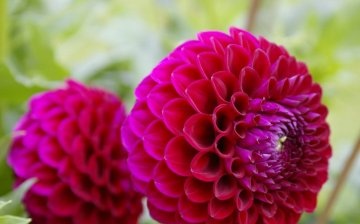
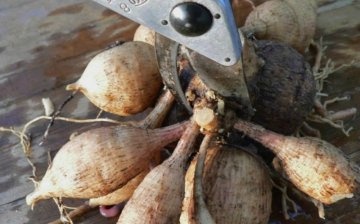

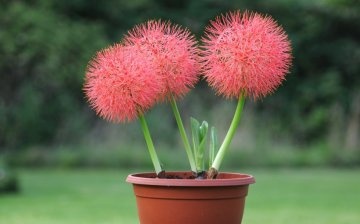
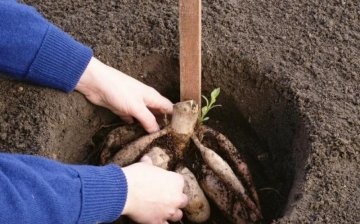
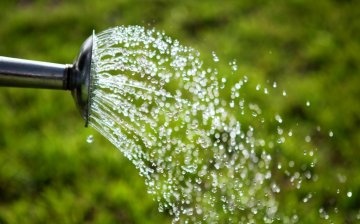
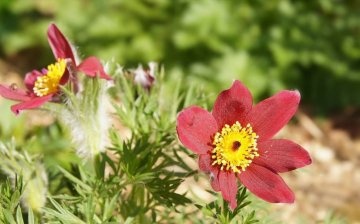







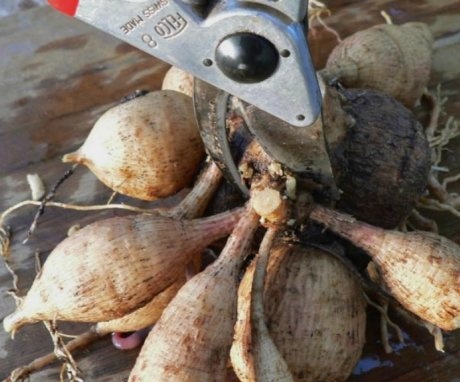
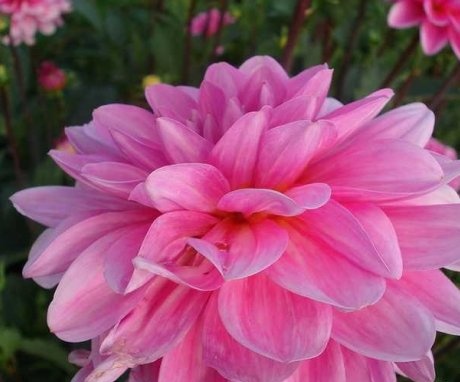
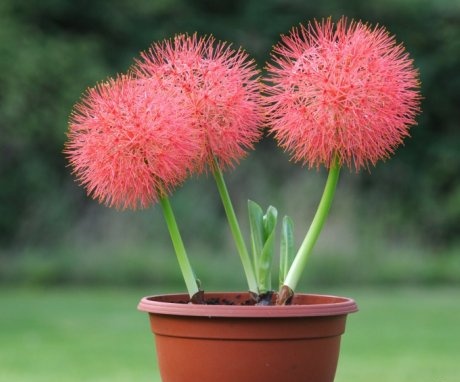
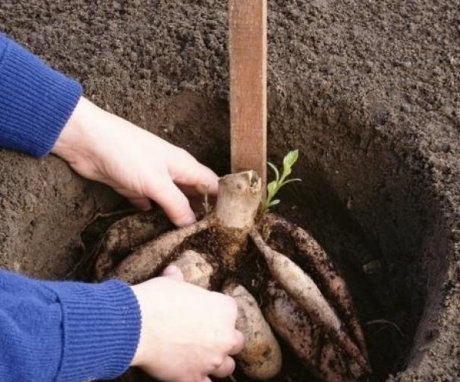

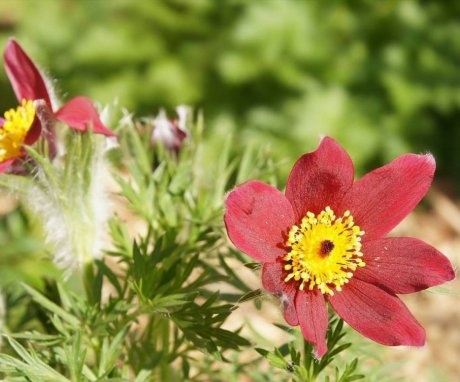
For some reason, it is more difficult for me with garden flowers than with indoor flowers, they get sick from time to time, and I also have to fertilize them a lot. But with the rooms, everything is much simpler, almost something is wrong, then I reconsider in a new land.
Of the tuberous plants, I have only a fern at home. Easy to propagate with a tuber - dug out and planted this "potato" in another pot, germinates quickly, not whimsical.